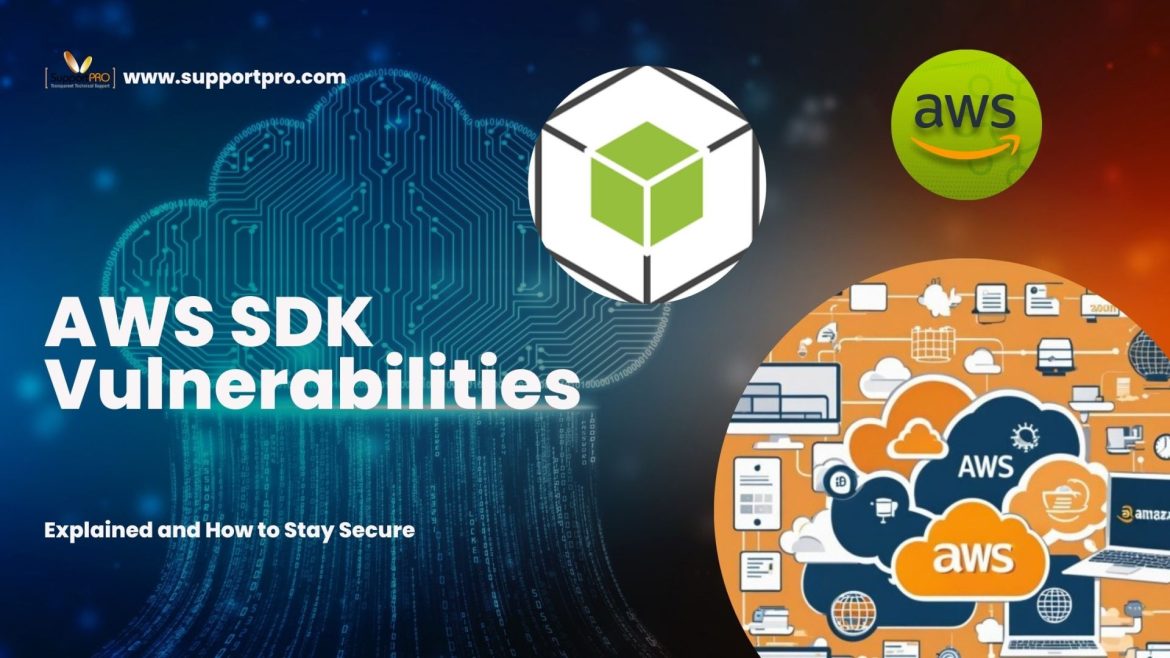Discover common AWS library vulnerabilities and practical steps to keep your SDKs, apps, and cloud infrastructure secure.
AWS is everywhere these days. Startups lean on it to get off the ground quickly, and bigger companies run half their infrastructure there. If you’ve worked with AWS for more than a day, you’ve probably touched the SDKs—boto3 for Python, the JavaScript SDK, maybe the Java one. They’re the glue that makes automation, apps, and services like S3 or DynamoDB actually usable.
That’s the upside. The downside? These libraries aren’t magic. They’re code, and like any code, they come with bugs, misconfigurations, and the occasional nasty vulnerability. If you don’t keep an eye on them, they can turn into weak points that attackers love to exploit.
This post isn’t meant to scare you off AWS libraries—you need them. It’s here to lay out where things can go wrong, how you catch issues before they bite, and some habits that make life easier in the long run.
First, What Are AWS Libraries Anyway?
Think of AWS SDKs as toolkits. They let you interact with AWS services without writing raw API calls. You call a method in Python or JavaScript, and the SDK takes care of the rest. It’s convenient, and it’s why nearly every AWS-powered app relies on them.
But convenience has a trade-off. If you’re running old versions, stuffing keys into your code, or not paying attention to dependencies, you’re creating cracks in the system. And cracks don’t stay small for long in the cloud.
Where Things Usually Go Wrong
Here are a few patterns I’ve seen (and probably you’ve run into too):
- Old SDK versions. Easy to ignore updates, but those updates often patch real vulnerabilities.
- Credentials lying around. Keys in source code, tokens in logs—it happens more than people admit, and it’s dangerous.
- IAM roles that are too broad. Giving s3:* access because “it’s easier” might work today, but it’s a huge security hole.
- Dependencies you don’t control. A single vulnerable package in the dependency tree can pose a challenge.
- Over-sharing in logs. Detailed logs help you debug, but they are equally prone to attacks if the details are elaborate.
How Do You Catch These Issues?
- Run automated scans. Tools like Snyk or Dependabot will tell you when you’re pulling in bad versions.
- Do static analysis. SonarQube, Bandit (for Python), or similar tools help you find insecure patterns.
- Use AWS’s own tools. Security Hub and Inspector are good at spotting misconfigurations.
- Stay plugged in. Watch AWS SDK GitHub repos or release notes. A lot of people get burned simply because they didn’t know an update dropped.
Locking Things Down
None of this is rocket science, but it’s easy to let things slip. A few habits go a long way:
- Update SDKs regularly. Don’t put it off. Automate if you can.
- Keep IAM tight. Least privilege isn’t just a buzzword. Use Access Analyzer to check yourself.
- Handle credentials properly. No hardcoding. Use Secrets Manager or Parameter Store.
- Log smart. CloudTrail and GuardDuty are your friends, but don’t dump sensitive info in logs.
- Control dependencies. Pin versions and review them on a schedule.
Thinking Longer Term
Good security with AWS SDKs isn’t about one-time fixes. It’s about building practices into your workflow:
- Make security checks part of CI/CD (DevSecOps isn’t just a buzzword).
- Run audits on a regular basis. IAM policies drift, SDKs age, and people forget.
- Train your devs—bad habits creep in fast if no one knows better.
- Lock down network access so SDK calls only happen in the right places.
- Use the AWS Well-Architected Framework as a health check.
Wrapping Up
AWS SDKs and libraries are essential, but they’re not “set it and forget it.” Outdated versions, sloppy credential handling, and wide-open IAM roles are the usual culprits when something goes wrong.
If you keep things updated, use IAM with care, and lean on automation for scanning and monitoring, you’ll avoid most of the pain. Add training and regular reviews into the mix, and you’ll be ahead of the curve.
At the end of the day, AWS handles the cloud. You’re responsible for the way you use the libraries. Stay proactive, and they’ll stay the powerful tools they’re meant to be rather than the hole in your armor.
Partner with SupportPRO for 24/7 proactive cloud support that keeps your business secure, scalable, and ahead of the curve.




